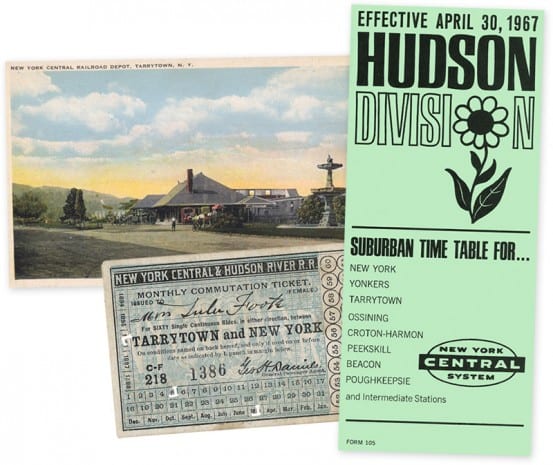
Tarrytown postcard, monthly ticket from 1896, and a Hudson Division timetable from 1967
As we continue our travels along the Hudson Line, our next stop is Tarrytown station, about 25 miles north of Grand Central Terminal. Today’s tour is chock full of photos and information – certainly befitting one of the line’s busiest stations. Tarrytown is second only to Croton-Harmon in terms of ridership on the Hudson Line. It boasts an 1890 station building, which has been recently restored, and one of Arts for Transit’s newest works. Undoubtedly, Tarrytown is one of the more interesting spots on the Hudson Line, and certainly worth checking out if you’re ever in the area.
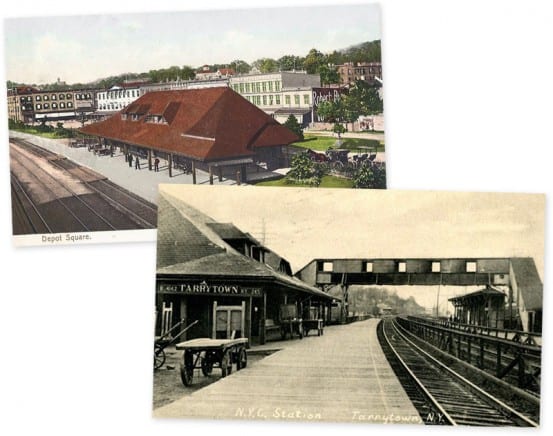
Postcard views of Tarrytown station
On our Hudson Line travels, you may have noticed that there are three stations on the line that match with very well with each other, but don’t quite match with the rest. Although beautiful, the stone stations at Tarrytown, Dobbs Ferry, and Irvington look a lot more like Boston & Albany stations than they do New York Central stations. This would be an apt observation, as each of those stations were designed by Shepley, Rutan and Coolidge – the same architects that designed over 20 Boston & Albany stations (including one of my favorites, Chatham). Shepley, Rutan, and Coolidge designed a total of five stations for the Hudson Division in 1898 and 1890 – Riverdale, Dobbs Ferry, Irvington, New Hamburg, and Tarrytown. New Hamburg’s station was never actually built. Of the four that were built, Tarrytown’s station was the most expensive, at a cost of $34,492 (which, adjusted for inflation, would be around $826,126 today).
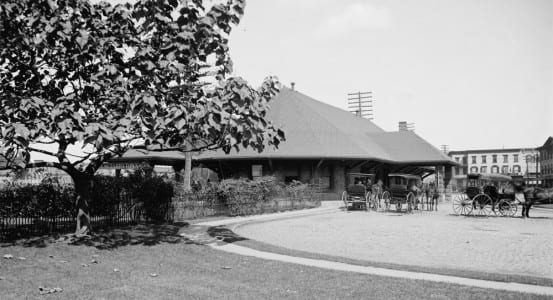
Early 1900’s view of Tarrytown station.
Many stations along the Hudson Line have gotten recent repairs, but the efforts that Metro-North went through to fix up Tarrytown went above and beyond. The $45 million dollar effort not only restored the historic station depot, but built new platforms, overpasses, stairways and shelters. Although all of those things are nice, I think it is the station building that people will notice first – especially since it contains one of the few remaining manned ticket windows. The building’s restoration included a new slate roof and gutters – but it is Metro-North’s attention to history that makes me give them major bonus points on this project. At some point over the years, the three dormer windows in the roof of the building had been lost. In a nod to history, the roof was restored to what it looked like when first built – and those restored windows definitely look nice!
Admittedly, one of my favorite parts of the station isn’t the historical – it is one of the new additions to Tarrytown. Holly Sears created some lovely art for the station through the Arts for Transit program. The piece, titled Hudson River Explorers, consists of 11 windows made of laminated glass. Each window features various animals above and below the water, some native to our area, and others that are a bit more exotic. Although all the animals look quite realistic, the scenarios and scale in which they’ve been placed are closer to fantasy. Polar bears swim with elephants and a house cat in one panel, and in another a bobcat stands next to an equally-sized butterfly. Many of the combinations, like a seahorse and a full-sized galloping horse, seem quite playful, and are a cheerful addition to the often humdrum travels of a regular commuter.
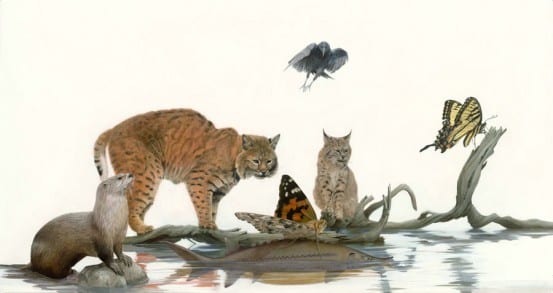
Two of the original paintings by Sears. Bright background colors were later added for the finished piece, which is made of laminated glass and was installed in the two station overpasses.
I’m always appreciative when an Arts for Transit artist includes more information about the work on their website, and Sears has done a good job with that. Seeing the process of the art – in this case from a painting into beautiful laminated glass – is always enjoyable. Sears’ site is worth checking out, as she features each of her original 11 paintings for this piece. These paintings are also on exhibit at the Hudson River Museum until October 13th.
That is about it in terms of information on Tarrytown station. Below you’ll find the photographs I took while wandering around – including a few as the construction was wrapping up. There is going to be a ribbon cutting ceremony at the new station on September 27 at 2:45, which should be interesting. Unfortunately I won’t be able to make it to the event to get any further photos!
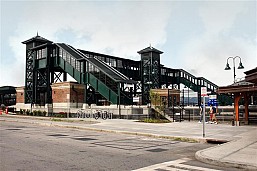 Â
 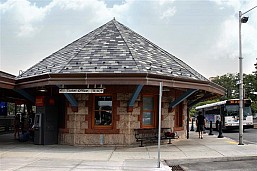 Â
  Â
 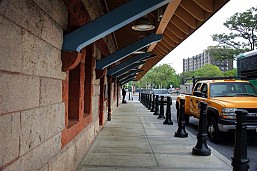 Â
 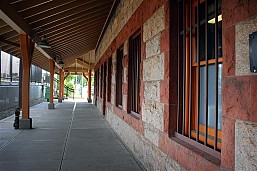 Â
 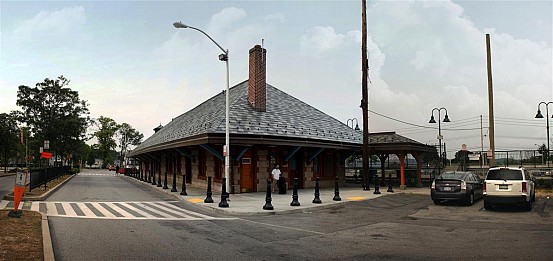 Â
 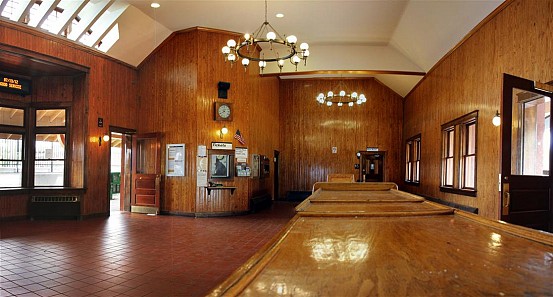 Â
 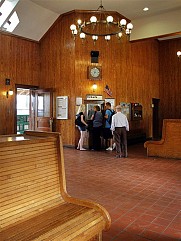 Â
 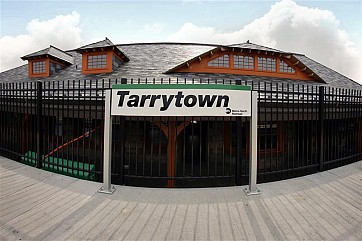 Â
 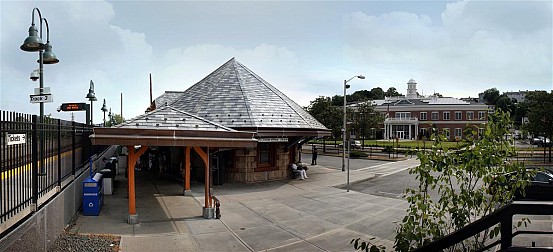 Â
 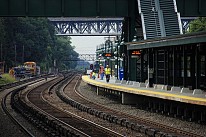 Â
 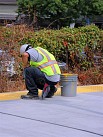 Â
 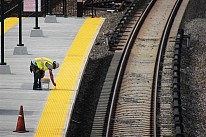 Â
 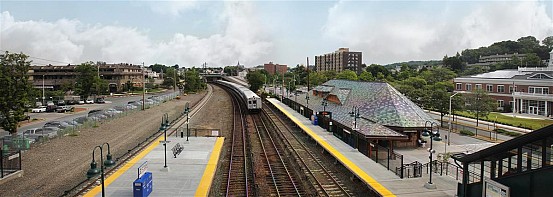 Â
 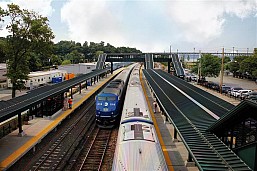 Â
 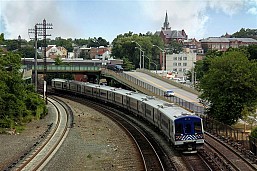 Â
 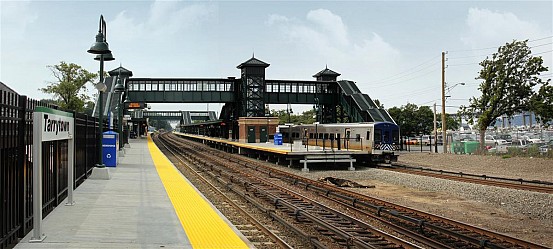 Â
 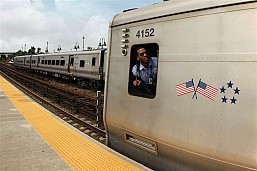 Â
 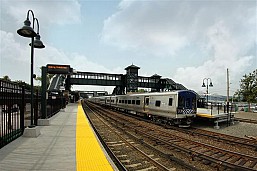 Â
 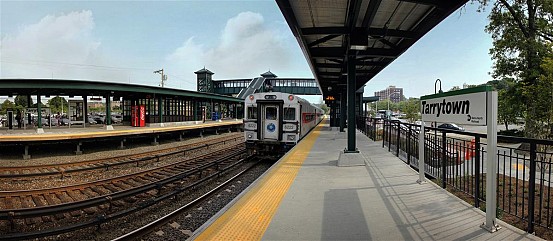 Â
 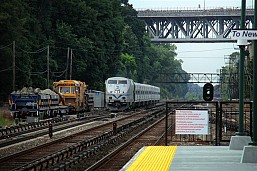 Â
 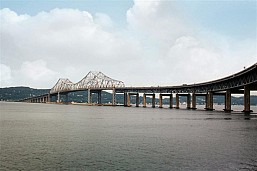 Â
 
*Special thanks to Terri Evans at Shepley Bulfinch for pulling some documents from the Shepley, Rutan and Coolidge archives for this post!


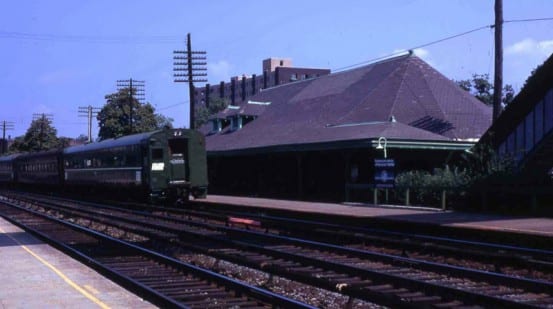
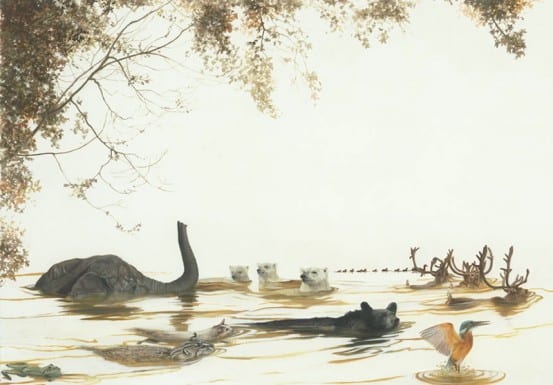
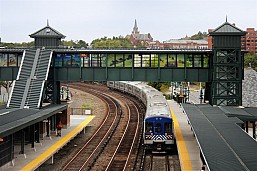
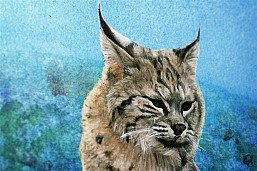
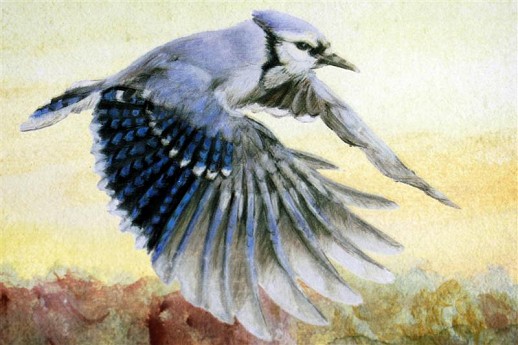
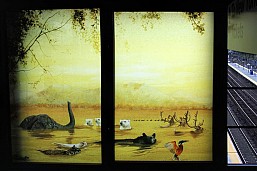
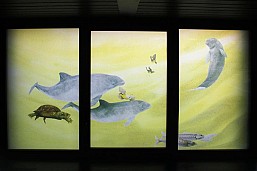
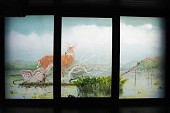
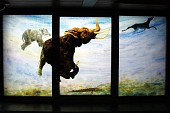
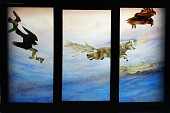

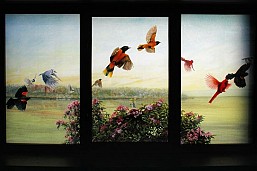
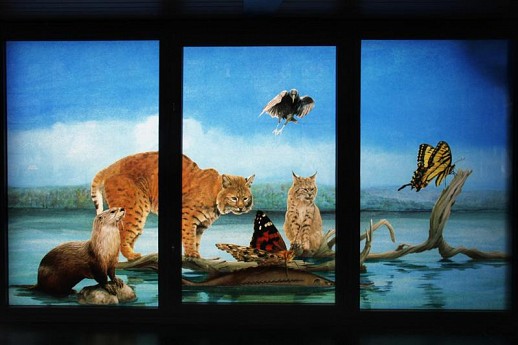
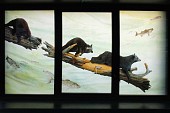
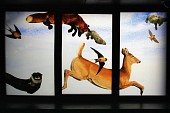
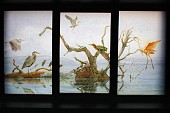
When I first glanced at the painting with the elephant, I thought it was a wading Brontosaurus (or whatever they’re called now) with its head cut off!
I thought the same thing. It took a second look to see an elephant’s trunk.
This is my current home station! I have been waiting for you to cover Tarrytown; I enjoy reading the history of all these stations and am particularly interested in the history of those I use frequently. Plus, I must thank you for the tip about the Arts for Transit pieces, which as a quirky animal [cat] lover I adore, being in the Hudson River Museum — I will have to swing by there sometime before the exhibit closes.
A few comments:
First, the construction. I wish that I had before and after pictures that I could post, because the additions are fairly significant. I recall that when I first used the station, during the earlier phases of the construction, that the Northbound/To Croton Harmon and Poughkeepsie platform, was a mere stub, with one shelter, connected to the ground by a single set of stairs (coming from the other side of the station, ie the parking lot on the Southbound side, boarding to go North, it actually took me a bit to find those stairs, as it was poorly marked and not visible from the overpass or Southbound platform. I felt a bit foolish after finding it, but still) and not connected to the overpass; now it stretches all the way to where the station is, has multiple stairs and ramps to enter it and is connected by elevator and staircase to the overpass. And that’s just one example. The restorations on the station building were also much appreciated. The construction was a worthwhile investment, in my opinion.
In addition to serving the commuters of Tarrytown and some of the areas surrounding it (due to frequency of trains, the station is preferred by some in neighboring areas, despite having a home station), it’s also worth noting that Tarrytown serves quite a bit of Rockland County residents. While many choose to use NJTransit, for those that want to avoid transfers, ride into GCT, for those that live closer to the Tappen Zee Bridge or for some other reason prefer Hudson Line MetroNorth to the Pasack Valley or Port Jervis lines, they use the Tarrytown station as their commuter station. There is even a bus, the TZXpress, that connects these two areas (note: the bus also stops at White Plains).
Though not unique to Tarrytown in the least, during weekday AM peak hours, we do have a coffee/hot chocolate/snacks/news stand in the station building. It is located in a small window on the reverse side of the station of where the ticket stand is, or right near the little hallway with the restrooms. When not open, which is most of the time, the window is closed and, as it blends in with the rest of the station, one would have no idea it existed.
Eri
Tarrytown had a small yard and a tower (OW) just south of the station,
and was the location of a General Motors Assembly Plant.
In a vain attempt to keep the plant open,NYState spent money
to raise clearances along the Hudson Line to allow the oversized boxcars
and tri-level auto racks to reach the GM plant,not long after the work was
done-GM pulled the plug on the plant.
The American Freedom Train(1975-1976 edition) made it’s only
appearance in Westchester County at the yard in Tarrytown,
regreatably without the steam locomotive.
3 Black PC U-boats(U-33b’s) brought the train from Selkirk
The ex RDG T-1(AFT #1) was not allowed in 3rd rail territory.
What a great feature. Thoroughly researched and well written. We are lucky to have several Shepley, Rutan & Coolidge rail stations near Pittsburgh (they also designed Shadyside Presbyterian Church). My investigations have also been helped by the generous folks at Shepley, Bulfinch. One of the stations is included in http://www.shadysidelantern.com/a_cathedral_to_a_chicken_coop.htm
Thanks! Cool to hear that the folks at Shepley Bulfinch have been helpful to other history-seekers… they have an archivist on staff, and I have to admit, I’m pretty envious of the person with that position!
I checked out your link there, the very last photo of the station in Beaver reminds me a little a bit of the old station in Chatham. I really do love the Richardsonian Romanesque style.
I certainly see the resemblance between Chatham & Beaver. I especially like the views you have of the Byzantine column capitals. Your site helps answer my questions about this rail system. I kept encountering it during an exhausting afternoon trying to find Amenia Union & the Richard Upjohn church there. My maps were only a little help & we were within a few miles of it & several people in a nearby town had never heard of it! The search was worth it however. How great to have commuter rail like this. Nothing like it North of Pittsburgh since the Harmony Short Line went under decades ago.
Just wanted to note something I uncovered while looking at The Hudson River Museum’s website:
This Sunday, September 23rd from 2-3:30pm, the museum will be hosting a Public Arts Forum discussing art in public places. The MTA Arts in Transit Manager, whose name is Katherine Meehan, will be there; Holly Sears will also be present, among other artists whose work has been featured in public places, including the artist who created the Arts for Transit pieces at Peekskill and an artist who created transit pieces for rail systems in other parts of the country. Based on Sears’ presence and the fact they use a thumbnail of her work to list the event, I assume her work will be discussed.
Link: http://www.hrm.org/calendar/foradults.html#panel
Love this! Great photos. I’ve linked to you on my site: http://patch.com/A-ydqk. Maybe you’ll come again when they finally hold that “ribbon cutting” they promised me.
Great piece. Love the art!
I echo the other comments. Wonderful write-up which shed some light on my beloved town. Wonderful photos and historical information. I’m going to share this link with my neighbors. Thank you!
Wonderful post on station and thanks for the commentary on the art work!
Ribbon cutting is today – Thursday, Sept. 27 at 2:45
Nice to hear from you, Holly! You did a really nice job at Tarrytown! Definitely one of my Arts for Transit faves.
Thx Emily – Great Cat Hat(s)
We’ve ridden the train along the Hudson River a handful of time and the views are often so breathtaking. Not to mention, there is something entirely enchanting about the humble train stations along the way. We check in on your blog regularly and love seeing the profiles of the different stops along the way. Just out of curiosity, where is the northernmost point you have ridden to?
Do you mean specifically on Metro-North, or on that part of track that the Amtrak shares with the Hudson Line? I’ve taken the train up to Poughkeepsie on Metro-North, and to Albany and out to Chicago on Amtrak. It is quite a nice ride!
Just wanted to comment that the 1890 Tarrytown train station was destroyed in a fire in 1922 and a new one was build in 1925. That’s the current station that’s there now.
I’m curious if you have a better source than Wikipedia… I’d certainly love to see it if you do. The article cited by Wikipedia states that the platform and station on the west side of the tracks burned down. We’re talking about the building on the east side of the tracks. It was not completely unheard of for four track roads to have stations on both sides. However, almost every single main station on the Hudson is located on the east side – they wanted the stations to face the villages, where all the people were. Glenwood, Yonkers, Hastings, Ardsley, Irvington, Philipse Manor, Scarborough, Croton North, Cold Spring, Poughkeepsie – all on the east side. Garrison is on the west side, but so is the village, it matches that.
All of that is really irrelevant though – the New York Times’ profile of Tarrytown cites the station was built in 1890, as does Metro-North’s press release regarding the station’s restoration… not to mention that the Library of Congress has a 1900 photo that looks a whole lot like the building that is there now.